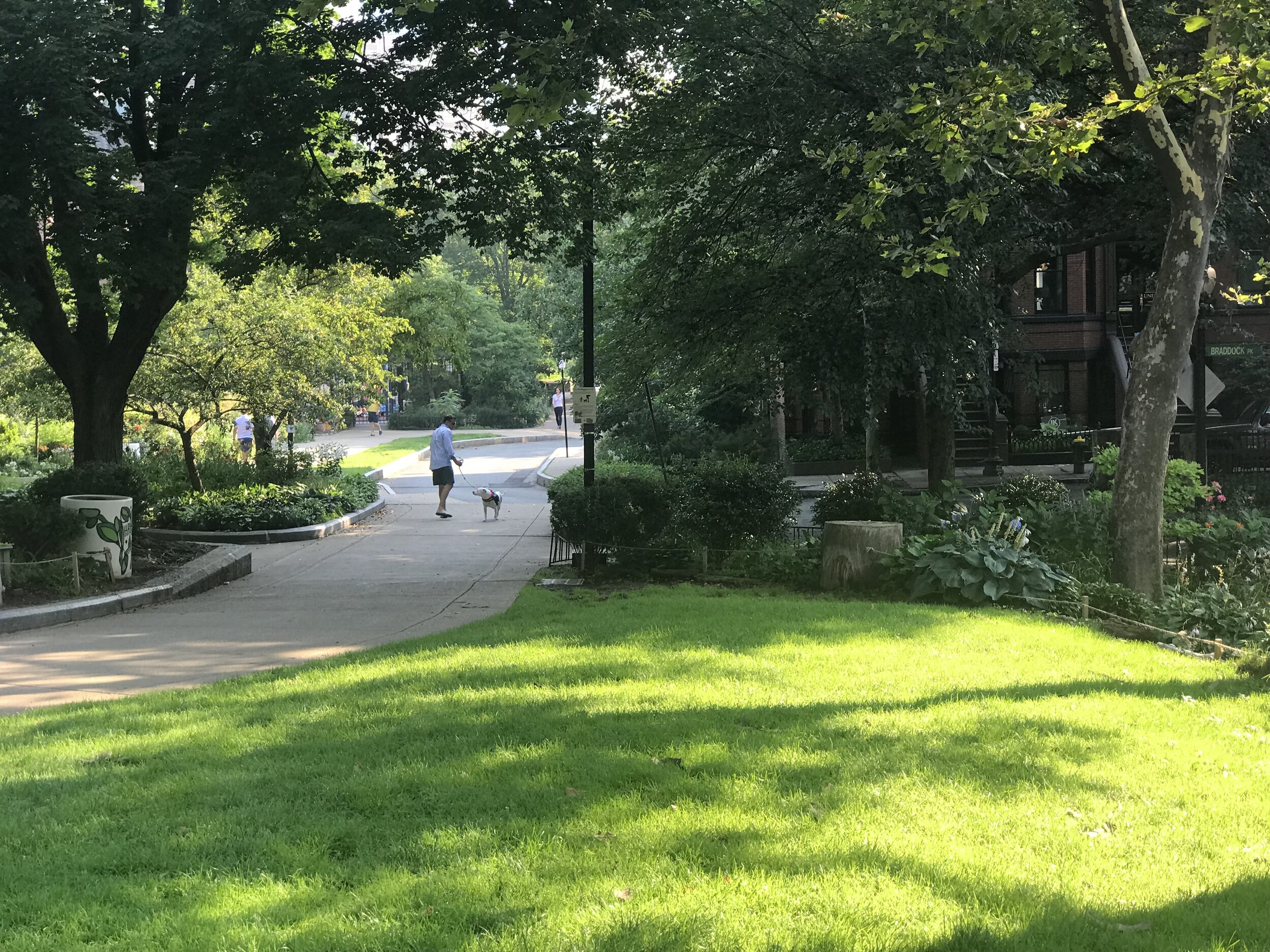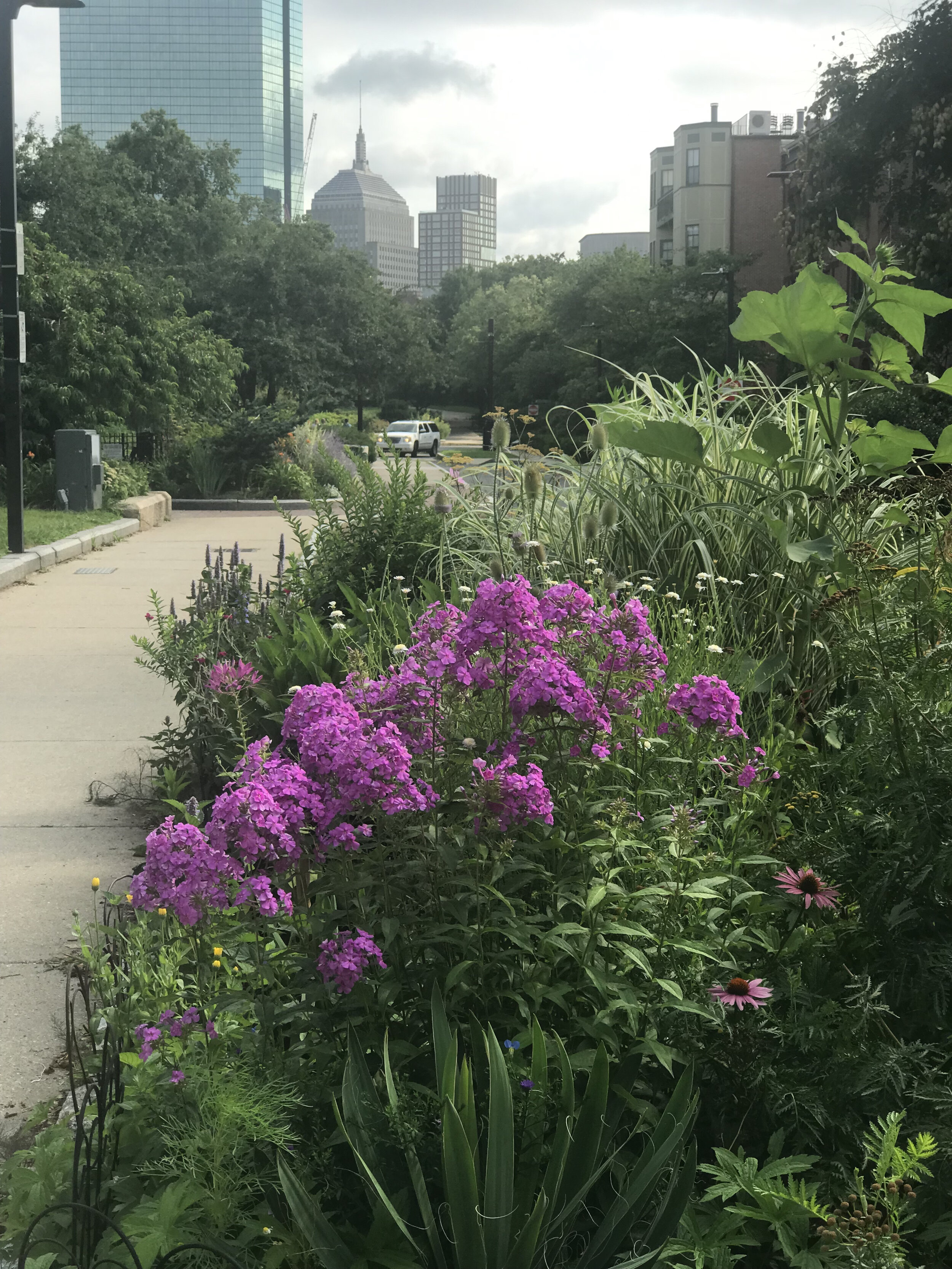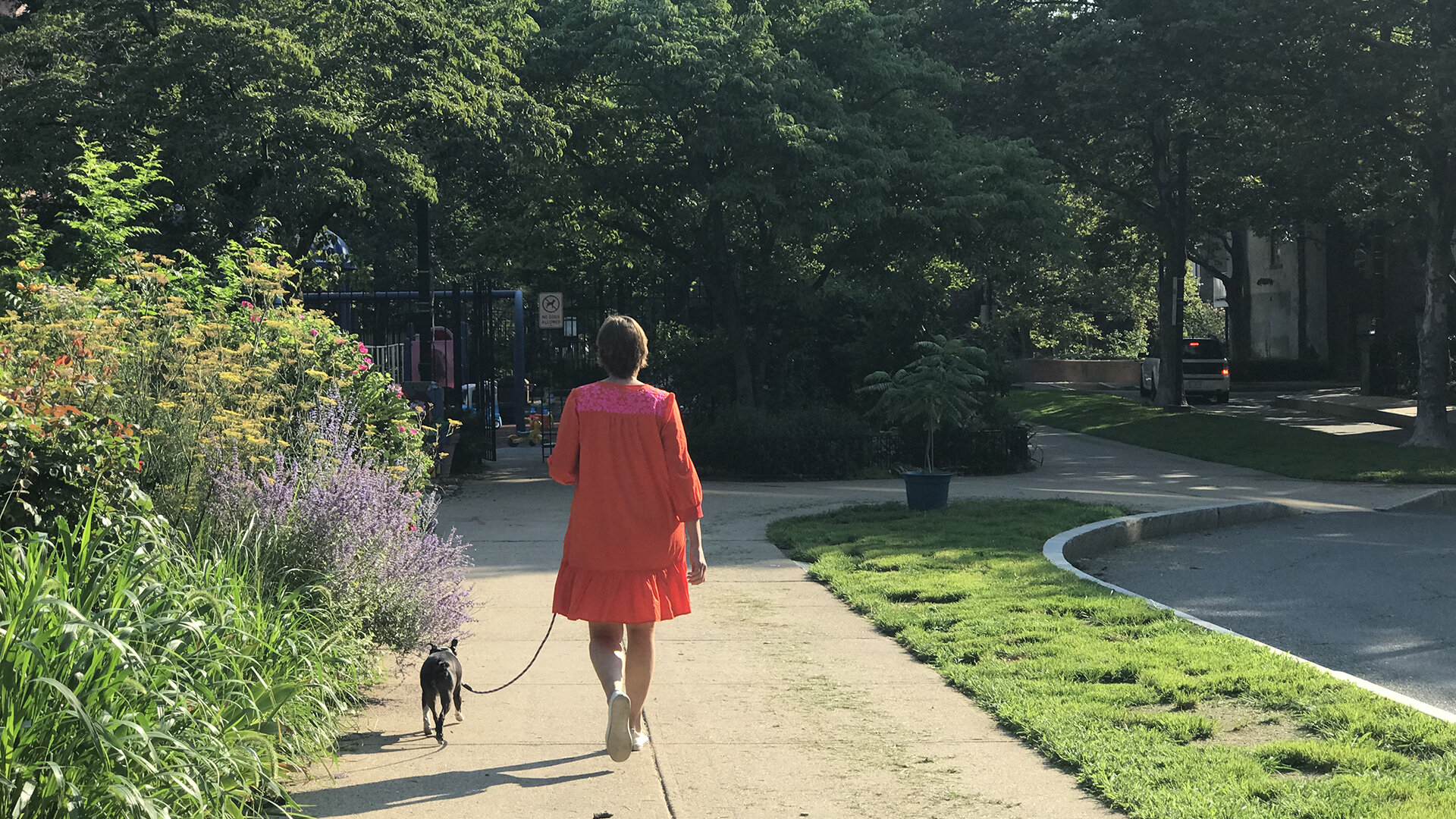Franco Campanello, president of the Southwest Corridor Conservancy, says “The dense plantings are a mirror of the prairies and fields across the American continent.”
If not for Franco Campanello, Southwest Corridor Park would likely still be the urban wasteland it was in the early 2000s.
Forged by the successful, two-decades struggle of many to stop an Interstate 95 Highway that would have cut through the South End, the four-mile linear park that now runs over and alongside the MBTA Orange line had been abandoned by the State and become a dangerous place. Previous efforts by volunteers to protect and restore it had failed. Half the plantings had died, weeds took over large sections, and other areas were bare and lifeless. The soil blew away in the wind.
Campanello, who founded Club Café and, with his business partner Caleb Davis, the Metropolitan Health Club, lived at 36 Claremont Park at the time and needed a project. He decided that the Southwest Corridor was a good one. Its non-profit Conservancy, founded in 2004, picked him for President. Shortly thereafter he started his new career as a restoration landscaper, “without a degree,” he says, but “no one else wanted the job.”
For starters, he signed on with Boston Cares, a non-profit that places volunteers in communities. One day a month, a corps of folks came, pulled weeds, removed bad trees and vines, spread compost and cleaned up the park. In 2008, they planted their first trees, two three-foot Hanoki Cypresses right outside the windows of Campanello’s home, now 20-foot sentinels.
Since then, more than 80 trees were added, as well as hundreds of shrubs and thousands of perennial and annual flowers. With his volunteers, Campanello put in more than 2000 hours of labor each year for the past 10 years. The dense plantings are a mirror of the prairies and fields across the American continent, he says. The trees are a selection of the great noble trees, like Sumac, Chestnut, Cypress and Tupelo, and others from the Far East, naturalized in America, such as Japanese White Pine, Maple, and Chinese Fir. “And the response of the insects and birds is a wonder,” Campanello observes.
“I have been fortunate to create beauty out of a wasteland,” he reflects. “The beauty I continue to discover as the plants grow to fullness is astounding. From tiny moss to towering Sycamore, the plants individually are a delight and, when woven together, are a symphony for the eyes. I see no reason why this Corridor Park should not be the equal to the other great parks of the city.”




